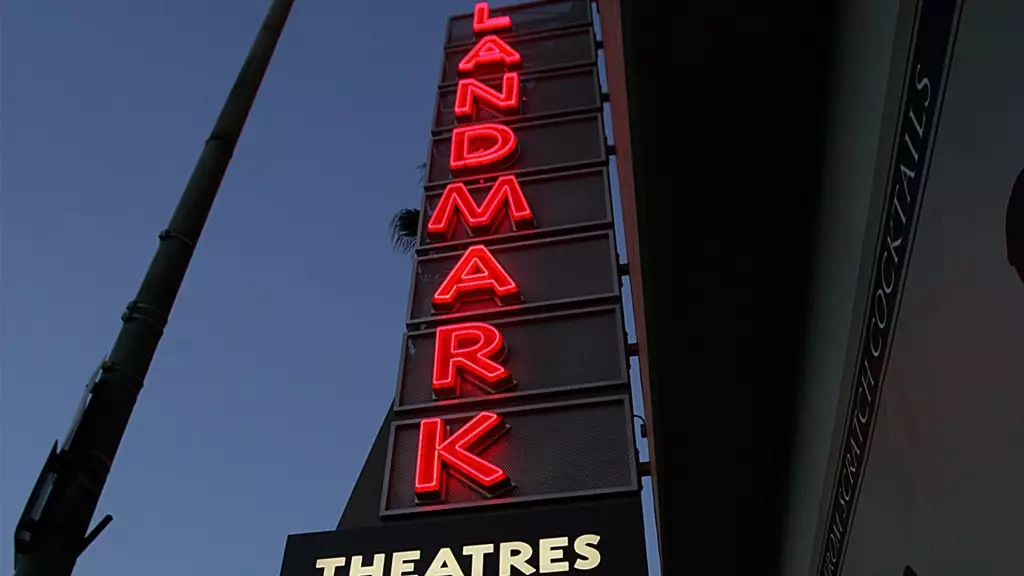Landmark Theatres stands on the brink of a significant transformation, with plans for extensive remodeling set to invigorate three of its prominent locations: Bethesda Row, Lagoon, and Kendall Square. Under the leadership of President and newly elevated Chief Executive Kevin Holloway, this move underscores a strategic pivot aimed at not only modernizing the theaters but also revitalizing the chain’s connection to the communities they serve. With a rich history of showcasing independent films, Landmark is now positioning itself strategically amidst a competitive cinema landscape, presenting a compelling response to the challenges posed by the pandemic.
Meeting the Demands of Modern Audiences
The importance of a revamped moviegoing experience cannot be overstated in today’s entertainment ecosystem, where streaming services have raised the bar for home viewing. With the slow recovery of box office attendance, especially among the coveted younger demographics, Landmark is making clear that the allure of the cinema is still very much alive, albeit in a new form. By investing in luxury recliner seating, enhanced audio-visual technology, and enriched refreshment options, Landmark aims to not just attract audiences back to the theaters, but to offer them an experience that transcends their living rooms.
The pandemic hit hard, leading to the closure of 32 of its locations. However, the decision to close underperforming theaters and focus on a more curated selection of venues is a sign of resilience. With only 26 theaters remaining, the chain appears to recognize that quality must prevail over quantity. This strategic contraction could serve as a powerful foundation for its rebirth.
Collaborative Investments and Community Focus
While the financial details surrounding these renovations remain somewhat nebulous, it is noteworthy that Landmark appears to be collaborating closely with landlords to finance the upgrades. This business model not only reflects a shared investment in the theaters’ futures but also highlights a commitment to nurturing spaces that resonate with local communities. By enhancing fixtures like the historic lobby designs and introducing culturally relevant elements—like the hand-painted murals in Lagoon—the chain appears poised to secure its status as a cultural landmark in the areas they serve.
Holloway’s ambition is to preserve the essence of Landmark’s identity while adapting to contemporary demands. His background in prominent cinema chains such as Alamo Drafthouse and ArcLight Cinemas introduces a blend of innovation and highly nuanced understanding of audience needs. As he embarks on this aspiration, the commitment to community engagement reflects a broader philosophy—one that recognizes that theaters must not only be venues for movies but also cultural heartbeats for their neighborhoods.
Navigating Financial Turbulence
Landmark’s path has not been without its bumps, especially as it navigated bankruptcy proceedings and legal disputes surrounding its ownership. The ramifications of a $534 million loan default by owner Charles Cohen have rippled through the organization, bringing to light uncertainties about its financial health. Even amidst this backdrop, the decision to remodel indicates a belief in a brighter future. This is a bold stance, signaling that Landmark is not just fighting for survival but striving for a renaissance by fostering an atmosphere where new films and classic favorites alike can thrive.
The ongoing litigation with Fortress underscores the precarious balance that moored Landmark creates between artistic vision and financial realities. While attorneys engage in battles over personal guarantees, Landmark’s operational strategy appears clear: focus on enriching the visitor experience and rejuvenating its locations, thereby reinforcing its cultural relevance while addressing financial hurdles.
A Vision for the Future
Holloway’s comments about retaining Landmark’s cultural significance resonate deeply amid these imminent changes. By investing in the theaters of tomorrow, Landmark is not merely adapting; it’s setting the stage for a cinematic revival. As renovations progress and new amenities arise, audiences will not only find refuge in engaging films but will also partake in a carefully crafted environment that celebrates the collective joy of storytelling.
It is clear that Landmark Theatres is poised for a transformation beyond physical upgrades—it’s an evolution rooted in heritage, community, and a steadfast commitment to the art of filmmaking. With each renovation, Landmark isn’t just fixing a structure; it’s breathing new life into a vital piece of film history, promising an enriching experience that welcomes back both old and new moviegoers alike.

Leave a Reply